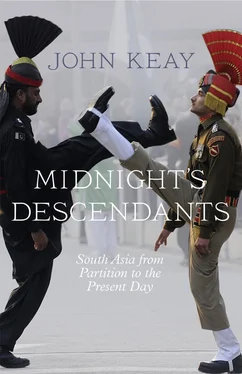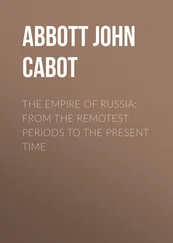Even the constitutional tags are not quite as irreconcilable as they seem. Once in power, democratically chosen leaders have frequently displayed authoritarian tendencies, while autocrats invariably pine for popular endorsement. Military coups have often proved less bloody than elections; and avowedly secular regimes may harbour as much fanaticism and discrimination as avowedly sectarian ones.
Despite Partition and all that followed, South Asians have more in common than they may care to acknowledge. Indeed, Partition itself needs to be seen as a shared experience. By devastating whole provinces, displacing perhaps fifteen million people and leaving as many again feeling unwelcome in the land of their birth, it everywhere loosened some of those non-doctrinal bonds of community and encouraged a new mobility.
In 1947 the majority of refugees headed for the nearest of the new borders. If they made it to the other side – a big ‘if’ in the Punjab – they settled down among their co-religionists in India or Pakistan. Some were allocated land that had been vacated by refugees moving in the opposite direction; others swelled the populations of the cities and thereby transformed the parent state’s demography. Karachi, the interim capital of Pakistan, attracted so many displaced Muslims from India that these muhajirs soon outnumbered the city’s native Sindhis. Delhi, if judged by its taxi-drivers, became a city of Sikhs, mostly refugees from Lahore; Lahore became a city of Muslims with scarcely a beturbanned Sikh to be seen; and Calcutta lost its public spaces when parks, gardens, railway stations and even cricket pitches were turned into makeshift dormitories by the displaced from all over eastern Bengal.
A few migrants quickly changed their minds and went back, some doing so several times. Others had their minds changed for them. When in 1971 East Pakistan became Bangladesh, refugees from India who had been welcomed into East Pakistan as Muslims in 1947 found themselves interned as non-Bengalis in a now proudly Bengali Bangladesh. Perhaps 100,000 of these so-called ‘Biharis’ are still there, eking out a pitiful existence in Bangladesh’s refugee camps; others have been shunted across India to Pakistan; and a lucky few have since obtained visas to reside overseas.
In this they are not alone. Emigration was as much a by-product of Partition as urbanisation. Over the three decades immediately after 1947 an estimated two million South Asians, many of them already displaced by Partition, exited the subcontinent altogether. Better prospects and wages undoubtedly tempted them, but it was the push-factor of dislocation and enforced mobility that proved crucial. Thanks to Partition, what might have been a modest trickle of economic migrants turned into that flood of expatriates, now over twenty million strong, known as ‘the South Asian diaspora’.
Applying the term ‘diaspora’ to the South Asian exodus remains controversial, although reasonable enough. South Asia’s Partition and the Nazi Holocaust have also been bracketed together, with comparisons being drawn between the apparently chaotic and unpremeditated nature of the one and the systematic, state-directed nature of the other. But more to the point, just as in some unspeakable way the Holocaust made the need for a Jewish homeland manifest and thus reversed one diaspora, just so did Partition yank at those bonds of kinship, locality and community, and unleash another great exodus of peoples.
At the time, the 1950s and ’60s, few In India or Pakistan considered the spectacle of mass emigration as grounds for congratulation. Plucked from villages in unfancied districts like Sylhet (east Pakistan), Mirpur (Azad Kashmir) and Jalandhar (India), then penned, tagged and bussed to an international airport, the huddles of all-male migrants hunkered down beside the check-in desks seemed a sad commentary on the lofty hopes of Independence. Their minders brandished wads of tickets and newly minted documentation. For the passport-holders themselves, holding their passports was seldom an option; most could barely sign their name or pronounce their destination; their identities, like their paycheques, were in hock to their gang-masters.
In the 1960s these emigrants were destined principally for low-paid jobs in the UK and North America, thereafter and more substantially for the Gulf states. Others followed well-trodden trails to east and south Africa, the Caribbean, South-East Asia and the Pacific. These were the destinations to which bonded workers recruited for labouring elsewhere in the British Empire had traditionally been despatched. The new migrants looked no more go-getting or better prepared than their nineteenth-century antecedents. A hookah might be passed among them in the airport forecourt; betel-stained saliva betrayed their sojourn in the departure lounge. The white-shirted businessmen and briefcase-clutching bureaucrats brushed past with eyes averted.
Yet in retrospect this unpromising stream of exiles heralded a new respect for the region’s international profile and added an important new dimension to the fraught relationships between its post-Partition states. By the 1980s cash remittances sent home from places as far apart as Dubai and British Columbia were critical in sustaining the economies of all the South Asian states. They also transformed the built landscape in the emigrants’ Bangladeshi, Indian and Pakistani areas of origin. At about the same time, second-generation South Asians in the West were being joined by a second wave of emigrants from the subcontinent. Young and ambitious, both were more interested in professional qualifications and internships than hourly rates. History sanctioned their quest for advancement. Without exception, all the architects of Independence, from Gandhi to Nehru, Jinnah, Ambedkar and Patel, had acquired their lawyers’ training in Britain. Political freedom had come courtesy of diasporic passport-holders; economic betterment would follow suit.
For now it was US degrees, corporate experience, entrepreneurial skills and silicon technology that were the attractions. And unlike bus-conducting, curry-cookery or courtroom rhetoric, these were qualifications in high demand back in South Asia. The massive back-transfer of skills, and then investment, that resulted would dramatically empower the Republic of India and to a lesser extent its neighbours. From it sprang that great transnational community of South Asian origin that would be so ideally placed to prosper in a globalised century. The despised diaspora was metamorphosing itself into the most desirable of elites. In short, and by some delicious quirk of fate, peoples so keen to equate community with nation, nation with state, and to identify with a ‘bounded territory’, were proving the most adept at transcending such obstacles.
Regrettably, this also has a downside. Ensconced nowadays in the airport’s premium business lounges, the Asian knights of the global economy are not encouraged to transcend the febrile frontiers of South Asia itself. Once reviled as deserters by patriotic nationalists, those emigrants who return are now embraced and fêted. ‘Non-Resident Indian’ (NRI), from being a term of contempt, has become an accolade. New Delhi – and Islamabad and Dhaka in respect of their Pakistani and Bangladeshi equivalents – not only woos its NRIs but most emphatically claims them. Their US, Canadian and EU passports carry Delhi’s endorsement of their status as ‘Persons of Indian Origin’ (PIOs) or ‘Overseas Citizens of India’ (OCIs). Residential options, fiscal breaks and investment incentives await the prodigals; receptions and conferences are organised specifically for them; whole government ministries pander to their needs; homegrown CEOs and rupee billionaires flock to join them.
The diaspora’s inward investment has powered up domestic economies throughout South Asia. But the start-ups and the statistics are not the only things to benefit from diasporic largesse. Numerous non-governmental agencies and charities, among them organisations commonly blamed for the abiding level of communal strife, are also handsomely supported by this overseas citizenry. A classic example was provided by Sri Lanka’s Liberation Tigers of Tamil Eelam (LTTE), otherwise known as the ‘Tamil Tigers’. For thirty years the LTTE obtained arms and training in India and found sanctuary there while being heavily bankrolled by the donations of Tamils and Tamil sympathisers resident in the West. Kashmiris, principally in Britain, funded the Jammu and Kashmir National Liberation Front; Sikhs, many in Canada, helped sustain the Khalistan movement for an independent Sikh state. Likewise, Saudi dinars are channelled through diasporic Muslims to the Islamist madrassahs of Pakistan; and US dollars raised by diasporic Hindus finance the temple-building and the social and educational programmes of extremist outfits like the Shiv Sena and the RSS. For longer than anyone can remember, Naga nationalists have been funding their open insurgency from overseas.
Читать дальше












